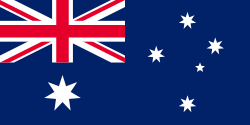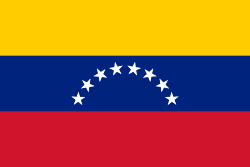Denis Gremelmayr
| Denis Gremelmayr | |
|---|---|
 | |
| Stát | |
| Datum narození | 16. srpna 1981 (41 let) |
| Místo narození | Heidelberg , Západní Německo |
| Bydliště | Lampertheim, Německo |
| Výška | 182 cm |
| Hmotnost | 73 kg |
| Profesionál od | 2000 |
| Držení rakety | levou rukou;bekhend obouruč |
| Výdělek | 852 266 USD |
| Dvouhra | |
| Poměr zápasů | 32–58 |
| Tituly | 0 ATP |
| Nejvyšší umístění | 59. místo (5. květen 2008) |
| Dvouhra na Grand Slamu | |
| Australian Open | 3. kolo (2006) |
| French Open | 1. kolo (2008, 2009)) |
| Wimbledon | 1. kolo (2008) |
| US Open | 1. kolo (2008) |
| Čtyřhra | |
| Poměr zápasů | 8–15 |
| Tituly | 0 ATP |
| Nejvyšší umístění | 188. místo (22. červen 2009) |
| Údaje v infoboxu aktualizovány dne 18. leden 2011 Některá data mohou pocházet z datové položky. | |
Denis Gremelmayr (* 16. srpna 1981, Heidelberg, Západní Německo) je německý profesionální tenista, který hraje na okruhu ATP od roku 2000. K únoru 2011 na něm nevyhrál žádný turnaj, ve čtyřhře získal na challengerech šest titulů v singlu a dva v deblu, v sérii Futures, která se koná v rámci ITF, pak triumfoval osmkrát ve dvouhře. Jeho dosud nejvyšším postavením na žebříčku ATP ve dvouhře je 59. místo (5. května 2008) a ve čtyřhře 188. místo (22. června 2009). K roku 2011 jej trénoval Helmut Luethy.
V roce 2008 prohrál ve 2. kole Australian Open v pěti setech s nenasazeným Američanem Vincem Spadeou. V dubnu se pak probojoval do semifinále portugalského Estoril Open, v němž podlehl ve třech sadách prvnímu hráči světa Rogeru Federerovi.
Finálová utkání na okruzích ATP a ITF
Dvouhra – vítězství (14)
| Legenda (dvouhra) |
| Grand Slam (0) |
| Tennis Masters Cup (0) |
| ATP Masters Series (0) |
| Challengers (6) |
| Futures (8) |
| Č. | Datum | Turnaj | Povrch | Soupeř ve finále | Výsledek |
| 1. | 25. září 2000 | tvrdý | 6–1, 6–2 | ||
| 2. | 8. ledna 2001 | antuka | 7–6, 7–5 | ||
| 3. | 8. října 2001 | antuka | 6–4, 6–0 | ||
| 4. | 21. ledna 2002 | tvrdý | bez boje | ||
| 5. | 25. srpna 2003 | antuka | 6–3, 3–6, 6–3 | ||
| 6. | 1. listopadu 2004 | tvrdý | 6–4, 6–0 | ||
| 7. | 27. června 2005 | antuka | 6–4, 6–2 | ||
| 8. | 4. července 2005 | antuka | 6–2, 6–1 | ||
| 9. | 3. září 2007 | antuka | 6–7, 6–2, 6–4 | ||
| 10. | 5. listopadu 2007 | koberec | bez boje | ||
| 11. | 3. listopadu 2008 | koberec | 6–2, 7–5 | ||
| 12. | 23. května 2010 | tvrdý | 6–4, 7–5 | ||
| 13. | July 5, 2010 | antuka | 7–5, 6–4 | ||
| 14. | 19. července 2010 | antuka | 6–1, 6–2 |
Odkazy
Reference
V tomto článku byl použit překlad textu z článku Denis Gremelmayr na anglické Wikipedii.
Externí odkazy
 Obrázky, zvuky či videa k tématu Denis Gremelmayr na Wikimedia Commons
Obrázky, zvuky či videa k tématu Denis Gremelmayr na Wikimedia Commons - (německy) Denis Gremelmayr – oficiální stránka
- Denis Gremelmayr na stránkách ATP Tour (anglicky)
- Denis Gremelmayr na stránkách Mezinárodní tenisové federace (anglicky)
Média použitá na této stránce
Flag of Australia, when congruence with this colour chart is required (i.e. when a "less bright" version is needed).
See Flag of Australia.svg for main file information.The flag of the Dominican Republic has a centered white cross that extends to the edges. This emblem is similar to the flag design and shows a bible, a cross of gold and 6 Dominican flags. There are branches of olive and palm around the shield and above on the ribbon is the motto "Dios,Patria!, Libertad" ("God, Country, Freedom") and to amiable freedom. The blue is said to stand for liberty, red for the fire and blood of the independence struggle and the white cross symbolized that God has not forgotten his people. "Republica Dominicana". The Dominican flag was designed by Juan Pablo Duarte, father of the national Independence of Dominican Republic. The first dominican flag was sewn by a young lady named Concepción Bona, who lived across the street of El Baluarte, monument where the patriots gathered to fight for the independence, the night of February 27th, 1844. Concepción Bona was helped by her first cousin María de Jesús Pina.
The flag of the Dominican Republic has a centered white cross that extends to the edges. This emblem is similar to the flag design and shows a bible, a cross of gold and 6 Dominican flags. There are branches of olive and palm around the shield and above on the ribbon is the motto "Dios,Patria!, Libertad" ("God, Country, Freedom") and to amiable freedom. The blue is said to stand for liberty, red for the fire and blood of the independence struggle and the white cross symbolized that God has not forgotten his people. "Republica Dominicana". The Dominican flag was designed by Juan Pablo Duarte, father of the national Independence of Dominican Republic. The first dominican flag was sewn by a young lady named Concepción Bona, who lived across the street of El Baluarte, monument where the patriots gathered to fight for the independence, the night of February 27th, 1844. Concepción Bona was helped by her first cousin María de Jesús Pina.
Vlajka České republiky. Podoba státní vlajky České republiky je definována zákonem České národní rady č. 3/1993 Sb., o státních symbolech České republiky, přijatým 17. prosince 1992 a který nabyl účinnosti 1. ledna 1993, kdy rozdělením České a Slovenské Federativní republiky vznikla samostatná Česká republika. Vlajka je popsána v § 4 takto: „Státní vlajka České republiky se skládá z horního pruhu bílého a dolního pruhu červeného, mezi něž je vsunut žerďový modrý klín do poloviny délky vlajky. Poměr šířky k její délce je 2 : 3.“
The national flag of Kingdom of Thailand; there are total of 3 colours:
- Red represents the blood spilt to protect Thailand’s independence and often more simply described as representing the nation.
- White represents the religion of Buddhism, the predominant religion of the nation
- Blue represents the monarchy of the nation, which is recognised as the centre of Thai hearts.
Denis Gremelmayr playing at the SAP-Open in San-Jose 2008


















